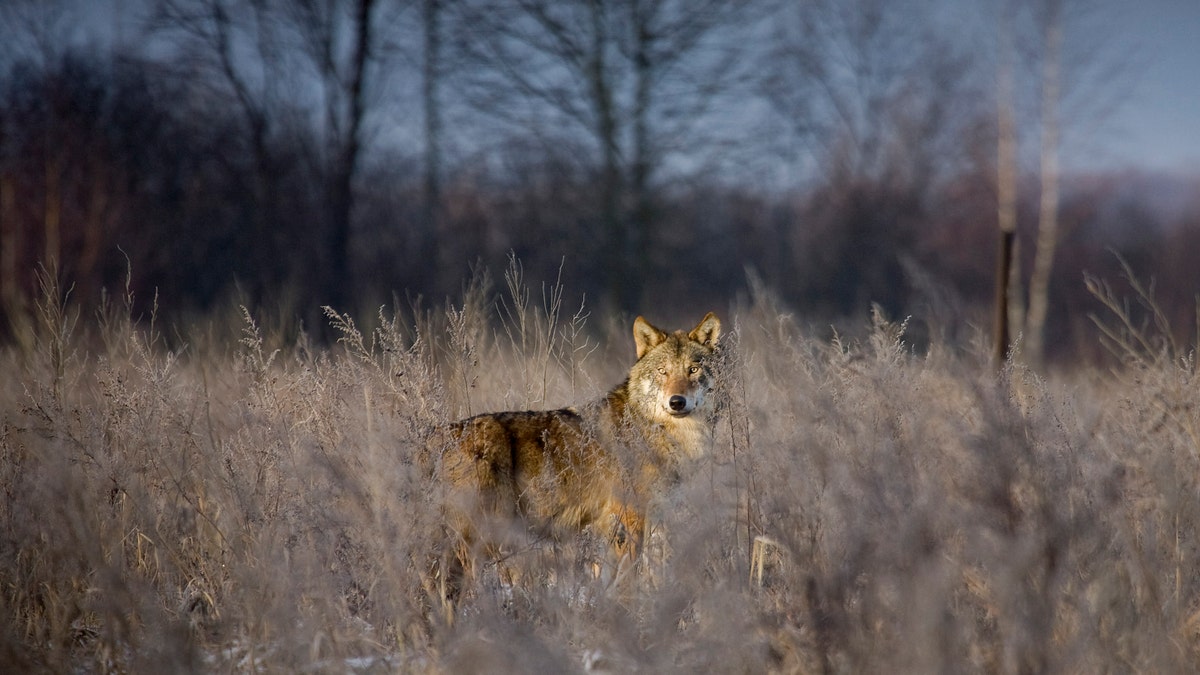
File photo - A wolf stands in a field in the 18 mile exclusion zone around the Chernobyl nuclear reactor near the village of Babchin some 217 miles southeast of Minsk, Feb. 1, 2008. (REUTERS/Vasily Fedosenko)
What happens when humans abandon 1,600 square miles because of radioactivity? Wildlife runs rampant, apparently. A new study on animals in the Chernobyl Exclusion Zone shows what once looked something like a wasteland is now packed with elk, roe deer, red deer, wild boar, and wolves.
Researchers conducted aerial surveys in the zone during winter months between 1987—a year after the Chernobyl disaster—and 1997 and estimated animal populations based on tracks in the snow, reports the Guardian.
They found the number of animals in the area was actually on par with those in four uncontaminated nature reserves nearby; but the number of wolves was more than seven times greater than in reserves.
The numbers of elk, roe deer, and wild boar also jumped at a time when elk and wild boar populations were sliding elsewhere in the former Soviet Union.
"It's very likely that wildlife numbers at Chernobyl are much higher than they were before the accident," a researcher says in a release. "This doesn't mean radiation is good for wildlife, just that the effects of human habitation, including hunting, farming, and forestry, are a lot worse." But another researcher who has studied birds in the zone tells the BBC the research "only applies to large mammals under hunting pressure, rather than the vast majority of animals—most birds, small mammals, and insects—that are not directly influenced by human habitation." And since the study didn't look at radiation exposure, it "does not address the issue of whether radiation has effects on reproduction, survival, longevity, or general health of the animals surveyed." While scientists found Chernobyl's wild boar population dipped in 1993, they say hungry wolves and a disease outbreak were to blame.
(There's something wrong with Chernobyl's forests.)
This article originally appeared on Newser: Wolves Have Taken Over Chernobyl
More From Newser
